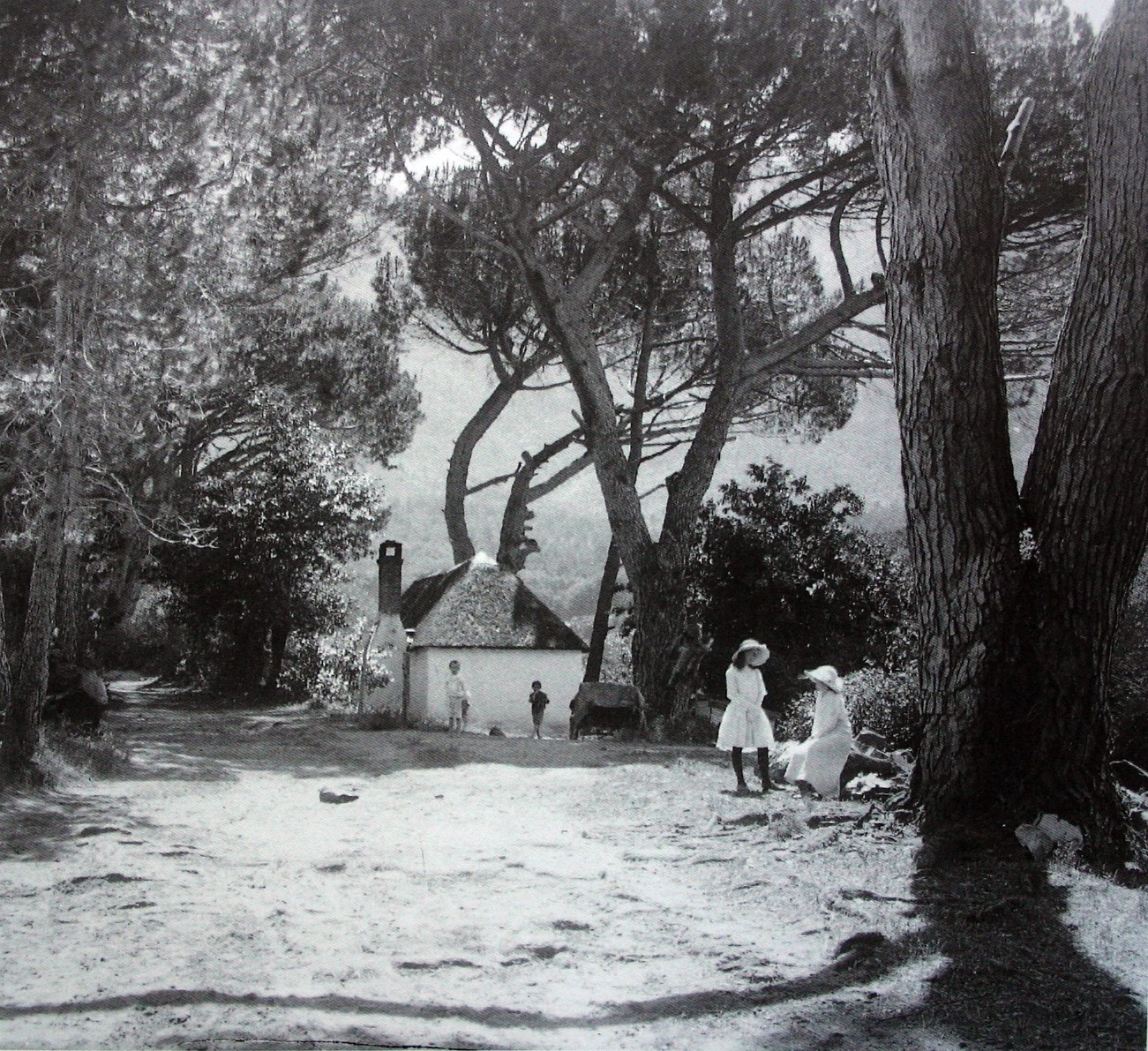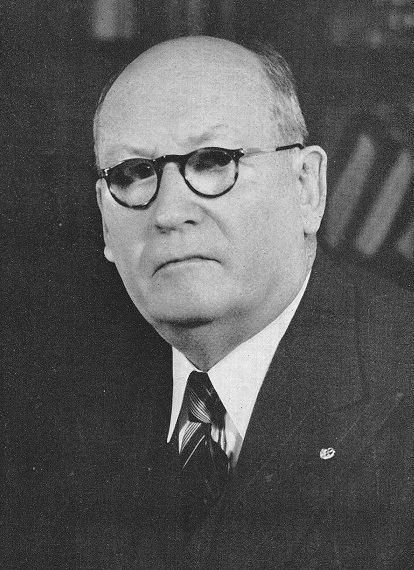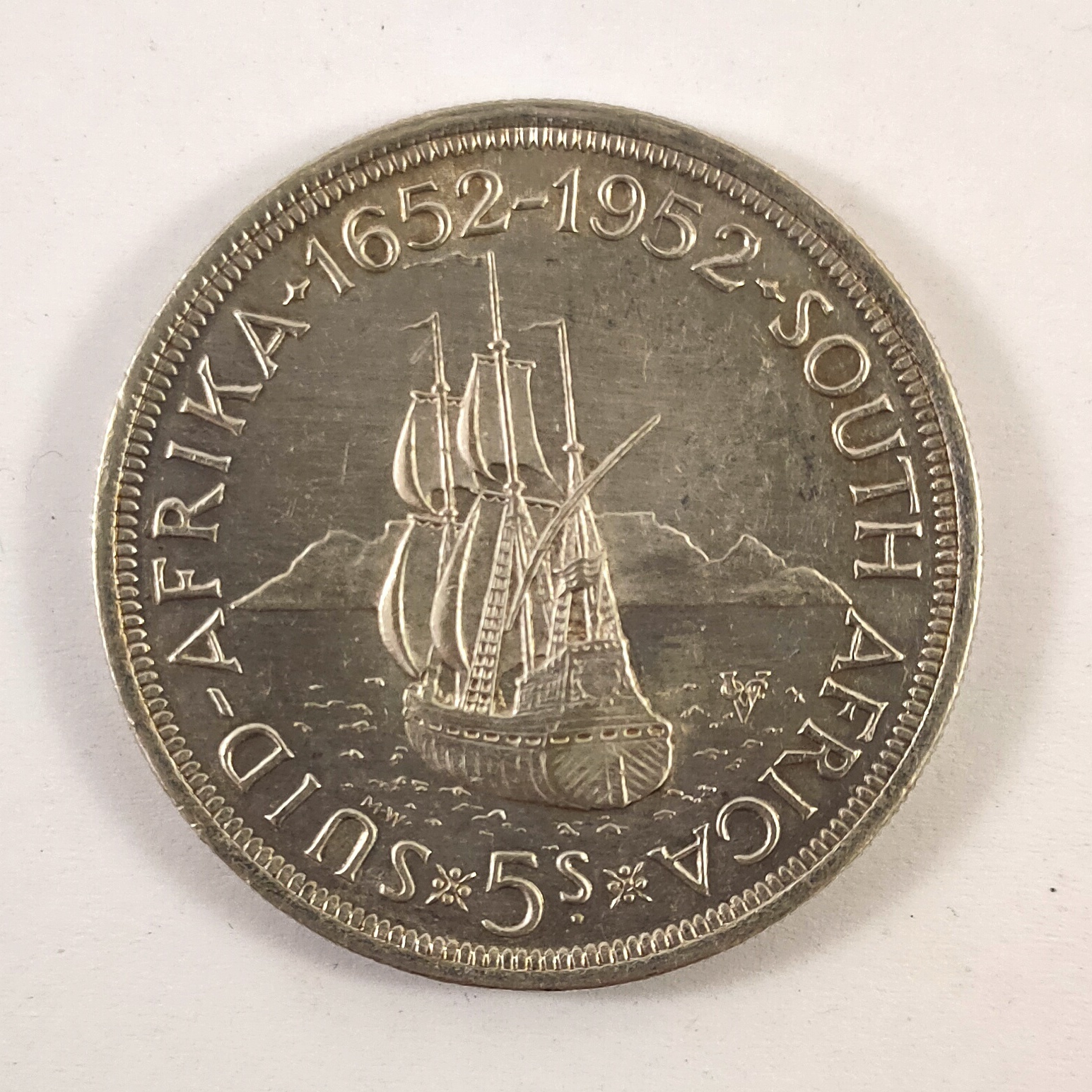|
Bishopscourt, Cape Town
Bishopscourt is a small, wealthy, residential suburb in the Southern Suburbs of Cape Town in the Western Cape, South Africa. It is part of the Cape Town Metropolitan Municipality, created in 2000, which includes the greater Cape Town area. It has approximately 350 houses most of which are on more than of land. The suburb includes the official residence of the Archbishop of Cape Town, which is known as Bishopscourt, whence comes the name of the suburb. It is also the location of a large number of foreign consulates and embassies. Along with the neighbouring suburbs of Newlands and Claremont, Bishopscourt is located in an area at the foot of Table Mountain that attractions considerably more rainfall than the rest of the Cape Peninsula. In 2015, it was ranked the sixth richest suburb in South Africa with an average property value of R11 million. History Following the establishment of the Dutch East India Company in 1652, the land that would later become Bishopscourt was ... [...More Info...] [...Related Items...] OR: [Wikipedia] [Google] [Baidu] |
Kirstenbosch Botanical Gardens
Kirstenbosch is a botanical garden nestled at the eastern foot of Table Mountain in Cape Town. The garden is one of 10 National Botanical Gardens covering five of South Africa's six different biomes and administered by the South African National Biodiversity Institute (SANBI). Prior to 1 September 2004, the institute was known as the National Botanical Institute. Kirstenbosch places a strong emphasis on the cultivation of indigenous plants. When Kirstenbosch was founded in 1913 to preserve the flora native to the South Africa’s territory, it was the first botanical garden in the world with this ethos, at a time when invasive species were not considered an ecological and environmental problem. The garden includes a large conservatory (The Botanical Society Conservatory) exhibiting plants from a number of different regions, including savanna, fynbos, karoo, and others. Outdoors, the focus is on plants native to the Cape region, highlighted by the spectacular collections of ... [...More Info...] [...Related Items...] OR: [Wikipedia] [Google] [Baidu] |
List Of Postal Codes In South Africa
Postal codes were introduced in South Africa on 8 October 1973, with the introduction of automated sorting. Format South African postal codes consist of four digits. Mail may be delivered either to the physical address or to a PO Box, particularly in rural areas where no street delivery is available. In addition, many large organisations may use Private Bag addresses, with mail dispatched to the holder by a mail contractor. In the case of cities and large towns, however, the last two digits of the postal code indicate the mode of delivery. The digits "01" indicate a street address and "00" a PO Box or Private Bag address, with addresses in Port Elizabeth, for example, using the following format: 300 Kempston Road Port Elizabeth 6001 PO Box 1840 Port Elizabeth 6000 In Pretoria, however, a different format is used, with "02" indicating a street address, and "01" indicating a PO Box or Private Bag address. 370 Church Street Pretoria 0002 PO Box 427 Pretoria 000 ... [...More Info...] [...Related Items...] OR: [Wikipedia] [Google] [Baidu] |
Apartheid
Apartheid ( , especially South African English: , ; , ) was a system of institutionalised racial segregation that existed in South Africa and South West Africa (now Namibia) from 1948 to the early 1990s. It was characterised by an authoritarian political culture based on ''baasskap'' ( 'boss-ship' or 'boss-hood'), which ensured that South Africa was dominated politically, socially, and economically by the nation's minority White South Africans, white population. Under this minoritarianism, minoritarian system, white citizens held the highest status, followed by Indian South Africans, Indians, Coloureds and Ethnic groups in South Africa#Black South Africans, black Africans, in that order. The economic legacy and social effects of apartheid continue to the present day, particularly Inequality in post-apartheid South Africa, inequality. Broadly speaking, apartheid was delineated into ''petty apartheid'', which entailed the segregation of public facilities and social ev ... [...More Info...] [...Related Items...] OR: [Wikipedia] [Google] [Baidu] |
Group Areas Act
Group Areas Act was the title of three acts of the Parliament of South Africa enacted under the apartheid government of South Africa. The acts assigned racial groups to different residential and business sections in urban areas in a system of urban apartheid. An effect of the law was to exclude people of colour from living in the most developed areas, which were restricted to Whites (e.g. Sea Point, Claremont). It required many people of colour to commute large distances from their homes to be able to work. The law led to people of colour being forcibly removed for living in the "wrong" areas. People of colour, who were the majority at the time, were given much smaller areas (e.g., Tongaat, Grassy Park) to live in than the white minority. Pass Laws required people of colour to carry pass books and later "reference books", similar to passports, to enter the "white" parts of the country. The first Group Areas Act, the ''Group Areas Act, 1950'' was promulgated on 7 July ... [...More Info...] [...Related Items...] OR: [Wikipedia] [Google] [Baidu] |
Jan Van Riebeeck
Johan Anthoniszoon "Jan" van Riebeeck (21 April 1619 – 18 January 1677) was a Dutch navigator, ambassador and colonial administrator of the Dutch East India Company. Life Early life Jan van Riebeeck was born in Culemborg on 21 April 1619, as the son of a surgeon. He grew up in Schiedam, where he married a 19-year-old Maria de la Queillerie on 28 March 1649. She died in Malacca, now part of Malaysia, on 2 November 1664, at the age of 35. The couple had eight or nine children, most of whom did not survive infancy. Their son Abraham van Riebeeck, born at the Cape, later became Governor-General of the Dutch East Indies. Employment in the VOC Joining the ''Vereenigde Oost-Indische Compagnie'' (VOC) (Dutch East India Company) in 1639, he served in a number of posts, including that of an assistant surgeon in the Batavia in the East Indies. He was head of the VOC trading post in Tonkin, Indochina. After being dismissed from that position in 1645 due to conducting ... [...More Info...] [...Related Items...] OR: [Wikipedia] [Google] [Baidu] |
Dutch East India Company
The United East India Company ( ; VOC ), commonly known as the Dutch East India Company, was a chartered company, chartered trading company and one of the first joint-stock companies in the world. Established on 20 March 1602 by the States General of the Netherlands amalgamating Voorcompagnie, existing companies, it was granted a 21-year monopoly to carry out trade activities in Asia. Shares in the company could be purchased by any citizen of the Dutch Republic and subsequently bought and sold in open-air secondary markets (one of which became the Amsterdam Stock Exchange). The company possessed quasi-governmental powers, including the ability to wage war, imprison and execute convicts, negotiate treaties, strike Coinage of the Dutch East India Company, its own coins, and establish colonies. Also, because it traded across multiple colonies and countries from both the East and the West, the VOC is sometimes considered to have been the world's first multinational corporation. St ... [...More Info...] [...Related Items...] OR: [Wikipedia] [Google] [Baidu] |
Arthur Elliott01
Arthur is a masculine given name of uncertain etymology. Its popularity derives from it being the name of the legendary hero King Arthur. A common spelling variant used in many Slavic, Romance, and Germanic languages is Artur. In Spanish and Italian it is Arturo. Etymology The earliest attestation of the name Arthur is in the early 9th century Welsh-Latin text ''Historia Brittonum'', where it refers to a circa 5th century Romano-British general who fought against the invading Saxons, and who later gave rise to the famous King Arthur of medieval legend and literature. A possible earlier mention of the same man is to be found in the epic Welsh poem ''Y Gododdin'' by Aneirin, which some scholars assign to the late 6th century, though this is still a matter of debate and the poem only survives in a late 13th century manuscript entitled the Book of Aneirin. A 9th-century Breton landowner named Arthur witnessed several charters collected in the '' Cartulary of Redon''. The Irish borrow ... [...More Info...] [...Related Items...] OR: [Wikipedia] [Google] [Baidu] |
Claremont, Cape Town
Claremont is a suburb of Cape Town, South Africa, situated in the Southern Suburbs, Cape Town, Southern Suburbs region of the city. It is a mixed-use area, with both residential properties and economically-important commerce, commercial sections. The suburb contains numerous retail centers, including Cavendish Square (shopping centre), Cavendish Square, Stadium on Main, and Palmyra Junction. Etymology The suburb is named after the Claremont House Estate, which was a prominent property in the area during area's early development in the early 19th century. Geography Claremont is situated 9 kilometers south of the city in the Southern Suburbs, Cape Town, Southern Suburbs region of Cape Town. It is bordered by Newlands, Cape Town, Newlands and Rondebosch to the north, Bishopscourt, Cape Town, Bishopscourt to the west, Kenilworth, Cape Town, Kenilworth to the south, and Lansdowne, Cape Town, Lansdowne and Rondebosch East to the east. The M3 (Cape Town), M3 and M5 (Cape Town), M5 ... [...More Info...] [...Related Items...] OR: [Wikipedia] [Google] [Baidu] |
Newlands, Cape Town
Newlands (Nuweland) is an upmarket suburb of Cape Town, South Africa. It is located at the foot of Table Mountain in the Southern Suburbs of Cape Town, and is the wettest suburb in South Africa due to its high winter rainfall. The neighborhood of Bishopscourt is situated to its southwest, Claremont to its southeast, and Rondebosch to its east and northeast. History Little is known of the inhabitants, likely Khoekhoe clans such as the ǃUriǁʼaekua, of the area prior to the arrival of the Dutch East India Company and the establishment of Cape Town and the Cape Colony in 1652. Then governor of the colony, Willem Adriaan van der Stel, was granted land for an estate in 1700 which he named De Nieuwe Land or Nieuwland. The estate was sold in 1791 and changed hands a number of times until 1826. In the 1860s the estate was leased to the British Colonial Government so as to act as a country residence for Cape governors, during which time it is thought that Newlands Village was es ... [...More Info...] [...Related Items...] OR: [Wikipedia] [Google] [Baidu] |
Anglican Archbishop Of Cape Town
The Diocese of Cape Town is a diocese of the Anglican Church of Southern Africa (ACSA) which presently covers central Cape Town, some of its suburbs and the island of Tristan da Cunha, though in the past it has covered a much larger territory. The Ordinary (officer), Ordinary of the diocese is Archbishop of Cape Town and ''ex officio'' Primate (bishop), Primate and Metropolitan bishop, Metropolitan of the ACSA. His seat is St. George's Cathedral, Cape Town, St. George's Cathedral in Cape Town. Desmond Tutu was archbishop from 1986 to 1996 and was archbishop-emeritus until his death in 2021. The current archbishop is Thabo Makgoba. Because of the archbishop's responsibilities as primate, many of his diocesan duties are delegated to a suffragan bishop known as the Bishop of Table Bay, an office currently held by Joshua Louw. (This is similar to the Bishop of Dover in the Church of England Diocese of Canterbury, who has held such a role since 1980.) History The diocese came into ... [...More Info...] [...Related Items...] OR: [Wikipedia] [Google] [Baidu] |
City Of Cape Town
The City of Cape Town (; ) is a Metropolitan municipality (South Africa), metropolitan municipality that forms the metropolitan municipality (South Africa), local government of Cape Town and surrounding areas. As of 2022 it has a population of 4,772,846. History Cape Town first received local self-government in 1839, with the promulgation of a municipal ordinance by the government of the Cape Colony. When it was created, the Cape Town municipality governed only the central part of the city known as the City Bowl, and as the city expanded, new suburbs became new municipalities, until by 1902 there were 10 separate municipalities in the Cape Peninsula. During the 20th century, many of the inner suburban municipalities became unsustainable; in 1913 the first major unification took place when the municipalities of Cape Town, Green Point, Cape Town, Green Point and Sea Point, Woodstock, Cape Town, Woodstock, Mowbray, Cape Town, Mowbray, Rondebosch, Claremont, Cape Town, Claremon ... [...More Info...] [...Related Items...] OR: [Wikipedia] [Google] [Baidu] |
Cape Town
Cape Town is the legislature, legislative capital city, capital of South Africa. It is the country's oldest city and the seat of the Parliament of South Africa. Cape Town is the country's List of municipalities in South Africa, second-largest city by population, after Johannesburg, and the largest city in the Western Cape. The city is part of the City of Cape Town metropolitan municipality (South Africa), metropolitan municipality. The city is known for Port of Cape Town, its harbour, its natural setting in the Cape Floristic Region, and for landmarks such as Table Mountain and Cape Point. In 2014, Cape Town was named the best place in the world to visit by ''The New York Times'', and was similarly ranked number one by ''The Daily Telegraph'' in both 2016 and 2023. Located on the shore of Table Bay, the City Bowl area of Cape Town, which contains its Cape Town CBD, central business district (CBD), is History of Cape Town, the oldest urban area in the Western Cape, with a signi ... [...More Info...] [...Related Items...] OR: [Wikipedia] [Google] [Baidu] |






